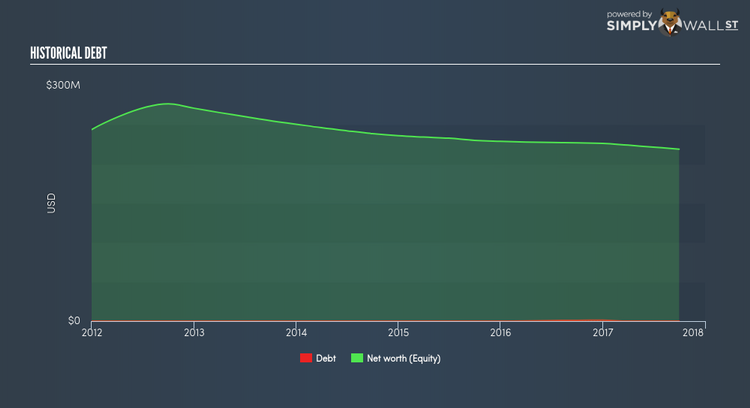Why Pacific Coast Oil Trust’s (NYSE:ROYT) ROE Of 1.43% Does Not Tell The Whole Story

Pacific Coast Oil Trust (NYSE:ROYT) generated a below-average return on equity of 1.43% in the past 12 months, while its industry returned 9.06%. Though ROYT’s recent performance is underwhelming, it is useful to understand what ROE is made up of and how it should be interpreted. Knowing these components can change your views on ROYT’s below-average returns. Today I will look at how components such as financial leverage can influence ROE which may impact the sustainability of ROYT’s returns. View our latest analysis for Pacific Coast Oil Trust
Peeling the layers of ROE – trisecting a company’s profitability
Return on Equity (ROE) weighs Pacific Coast Oil Trust’s profit against the level of its shareholders’ equity. An ROE of 1.43% implies $0.01 returned on every $1 invested. In most cases, a higher ROE is preferred; however, there are many other factors we must consider prior to making any investment decisions.
Return on Equity = Net Profit ÷ Shareholders Equity
ROE is assessed against cost of equity, which is measured using the Capital Asset Pricing Model (CAPM) – but let’s not dive into the details of that today. For now, let’s just look at the cost of equity number for Pacific Coast Oil Trust, which is 10.05%. This means Pacific Coast Oil Trust’s returns actually do not cover its own cost of equity, with a discrepancy of -8.62%. This isn’t sustainable as it implies, very simply, that the company pays more for its capital than what it generates in return. ROE can be dissected into three distinct ratios: net profit margin, asset turnover, and financial leverage. This is called the Dupont Formula:
Dupont Formula
ROE = profit margin × asset turnover × financial leverage
ROE = (annual net profit ÷ sales) × (sales ÷ assets) × (assets ÷ shareholders’ equity)
ROE = annual net profit ÷ shareholders’ equity
Basically, profit margin measures how much of revenue trickles down into earnings which illustrates how efficient the business is with its cost management. The other component, asset turnover, illustrates how much revenue Pacific Coast Oil Trust can make from its asset base. Finally, financial leverage will be our main focus today. It shows how much of assets are funded by equity and can show how sustainable the company’s capital structure is. Since ROE can be artificially increased through excessive borrowing, we should check Pacific Coast Oil Trust’s historic debt-to-equity ratio. Currently, Pacific Coast Oil Trust has no debt which means its returns are driven purely by equity capital. This could explain why Pacific Coast Oil Trust’s’ ROE is lower than its industry peers, most of which may have some degree of debt in its business.
What this means for you:
Are you a shareholder? ROYT’s below-industry ROE is disappointing, furthermore, its returns were not even high enough to cover its own cost of equity. Since its existing ROE is not fuelled by unsustainable debt, investors shouldn’t give up as ROYT still has capacity to improve shareholder returns by borrowing to invest in new projects in the future. If you’re looking for new ideas for high-returning stocks, you should take a look at our free platform to see the list of stocks with Return on Equity over 20%.
Are you a potential investor? If you are considering investing in ROYT, basing your decision on ROE alone is certainly not sufficient. I recommend you do additional fundamental analysis by looking through our most recent infographic report on Pacific Coast Oil Trust to help you make a more informed investment decision.
To help readers see pass the short term volatility of the financial market, we aim to bring you a long-term focused research analysis purely driven by fundamental data. Note that our analysis does not factor in the latest price sensitive company announcements.
The author is an independent contributor and at the time of publication had no position in the stocks mentioned.


